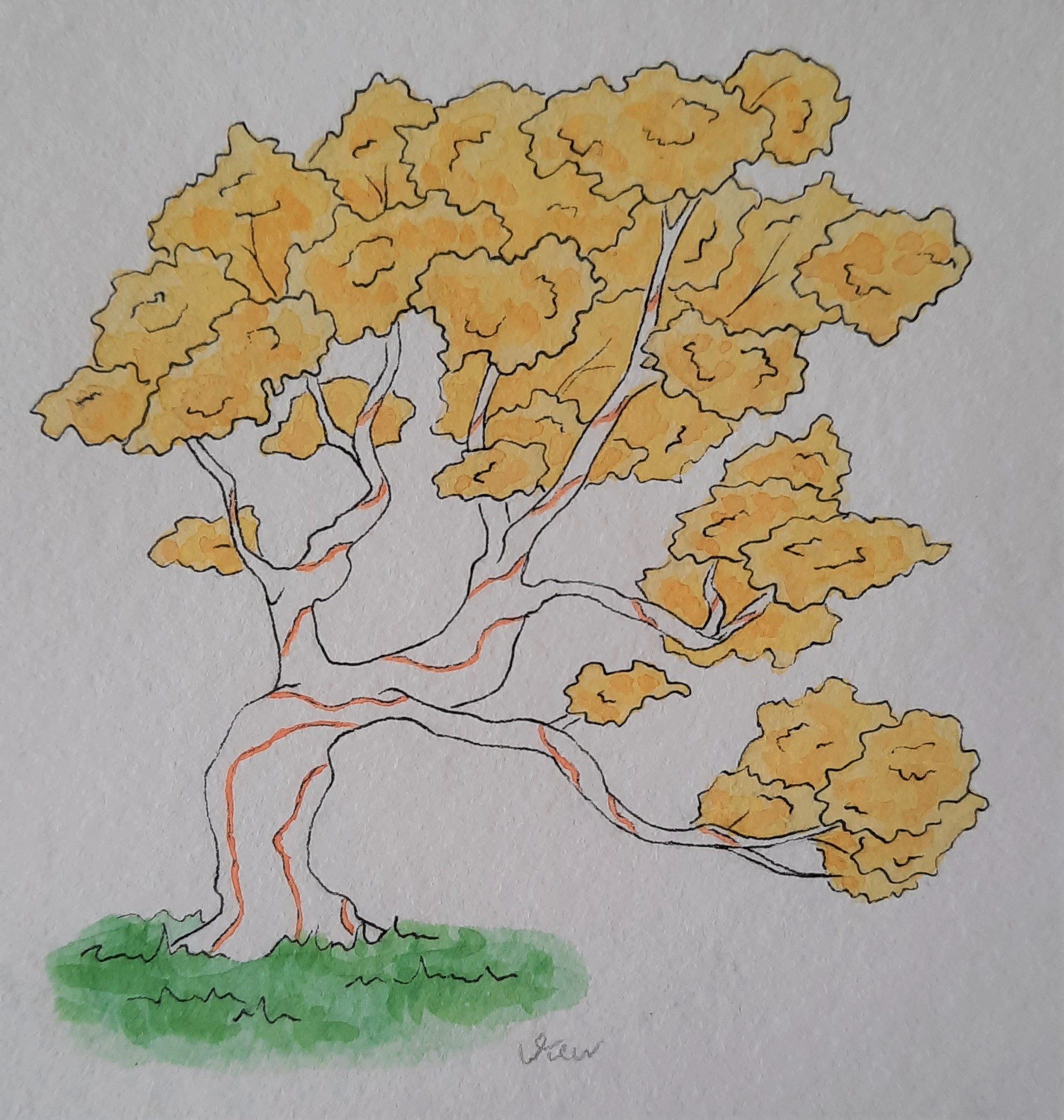Umbar tree
Look at that marvellous tree. This here, my friend, is an umbar. It protects against the creatures of the night, so keep your eye out, for it might safe your life.
Characteristics
With round-shaped, yellow leaves, and white bark veined with faintly illuminescent orange streaks, umbars are easily recognizable. Unlike other trees, umbars are not restricted to a certain biome, and grow all around the world. Whichever landscape, rainforest or desert, mountainous or near the sea, umbar trees can be found everywhere. But what makes umbar trees especially unique compared to any other tree is their natural ability to ward off malevolent creatures.
For a yet unknown reason, malevolent creatures walk around umbars in a very wide circle. Not much research has been done to discover the origin of these abilities, as research on malevolent creatures is dangerous and few people will risk their lives to find the answer. Additionally, research on umbars is difficult in itself. The tree does not flower, bear fruit nor produce seeds in any other way. Propagation by cutting has also never been successful for multiple reasons: cutting a branch is a tough effort, it does not grow roots when put on water, and over time it dies. Thus, knowledge on umbars is minimal, and due to all abnormal characteristics botanists even suggest umbars are in fact not trees. However, what they are instead, they cannot say.
Cultural significance
Due to their natural ability to repel malevolent creatures, umbar trees were, and still occasionally are, the centre of towns. Before the discovery of sun crystals, settlements were restricted to the location of umbars, even though the location might not be optimal considering other factors such as a water source or accessibility. Another restriction was town size, as houses far from the tree would not be protected.
Today, few umbar towns have grown out to full size cities. A small number of umbars were actually located in strategic locations and these towns substantially increased in size with the use of sun crystals. As an exception, in Oandeon umbar trees are religious symbols and many towns have grown into cities. However, in general, towns with an umbar tree are usually old and only bear cultural significance to a certain extent.
The extent to which umbars hold cultural significance greatly differs depending on location and thus culture. In some cultures, such as Oandeon cultures, where the trees are a religious symbol, temples are built around them and they are prayed to. In other cultures, their divinity is acknowledged once a year with a great festival. In even other cultures, they are just trees. Even within cultures, great differences exist. While Garyialans used to celebrate the gift of life umbars grant with a festival, nowadays people care less and especially city folk do not care to travel to the closest umbar to present an offer.
The doom of Ista
Only once in history has there been an attempt at cutting down an umbar tree at the base. Around 850 SD, in a town called Ista, the villagers decided to cut down their tree. The villagers figured if they made their homes and even carts from umbar wood, they would always be safe from the creatures. How wrong they were. It took twenty men and women with axes, saws and even pickaxes, to chisel away the bark which seemed as hard as rock. A whole day they chiselled, but when the sun went down, they were only halfway. At night the creatures came. The light emitted by the tree faltered. And then all went dark. Everybody knows the story about Ista, and what was left of it. There is even a song about it. Nobody has dared to cut down an umbar tree since.




Comments
Author's Notes
This article will be extended upon when I flesh out my cultures.